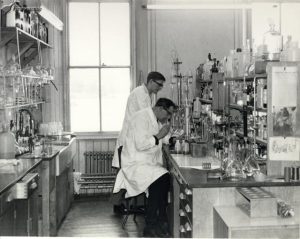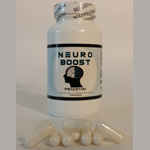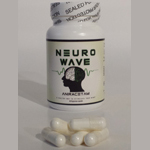Aniracetam vs Piracetam: Introduction
 There is a very special category of drugs called Nootropics. The more common public name is “Smart Drugs”. These drugs literally enhance overall brain function and health. This can be incredibly beneficial in the treatment of serious conditions and disease that disable and physically damage the brain. Nootropics can be beneficial in the treatment of dementia and Alzheimer’s disease, as well as repair damage brain tissue resulting from traumatic injuries. Nootropics are generally free of serious negative side effects and are not toxic when used well above proper dosages, albeit that is not recommended (South, 2014). Nootropics, like aniracetam and piracetam, may not affect every person in the same ways. What makes nootropics more versatile than other treatments is that the different nootropics can be used in tandem, at the same time. There appears to be no adverse effect from the mixing, in fact, it only helps to highlight each one individual focus and contribution. Two nootropics often combined are Aniracetam and Piracetam.
There is a very special category of drugs called Nootropics. The more common public name is “Smart Drugs”. These drugs literally enhance overall brain function and health. This can be incredibly beneficial in the treatment of serious conditions and disease that disable and physically damage the brain. Nootropics can be beneficial in the treatment of dementia and Alzheimer’s disease, as well as repair damage brain tissue resulting from traumatic injuries. Nootropics are generally free of serious negative side effects and are not toxic when used well above proper dosages, albeit that is not recommended (South, 2014). Nootropics, like aniracetam and piracetam, may not affect every person in the same ways. What makes nootropics more versatile than other treatments is that the different nootropics can be used in tandem, at the same time. There appears to be no adverse effect from the mixing, in fact, it only helps to highlight each one individual focus and contribution. Two nootropics often combined are Aniracetam and Piracetam.
Aniracetam vs Piracetam: History
Both Aniracetam and Piracetam are part of a specific family of chemicals called racetams. “Racetams are cerebral homeostatic normalizers, neuroprotectants, cerebral metabolic enhancers and brain integrative agents” (South, 2014). They are also identified by the sharing of a pyrrolidone nucleus. Most recetams fall into the category of nootropic, but a few are also used as stimulants. This definition shows the level of promise and potential in the implementing of racetams in the treatments of brain injury and disease. Research has been conducted since the 1960s on the benefits of nootropics and their different applications in helping with different afflictions and trying to determine why there effects manifest differently in different patients, even patients who are suffering from similar conditions (Johnson, 2014). That said, sometimes multiple, mixed doses of nootropics will be considered. Aniracetam and Piracetam are well known for working “well” together.
Aniracetam vs Piracetam: Stacking Nootropics
The combined compound that is created, when Aniracetam and Piracetam is “stacked,” which is the  term used for describing the dosage combination of these two nootropics, it actually enhances the effects of both, well above the individual effects. Piracetam helps to open up the oxygenation of the cerebral cortex and Aniracetam effects the mind’s desire for concentration and memory. It, also, is used to ease anxiety and nervous disorders. Additionally, Aniracetam aids in the forming of new synapses and in synaptic plasticity. Piracetam aids in memory and offers the ability to potential repair and protect the brain of neural loss due to disease. No wonder combined, these two nootropics, can have a highly beneficial effect on the research and treatment of Alzheimer’s disease, dementia, and traumatic brain injuries.
term used for describing the dosage combination of these two nootropics, it actually enhances the effects of both, well above the individual effects. Piracetam helps to open up the oxygenation of the cerebral cortex and Aniracetam effects the mind’s desire for concentration and memory. It, also, is used to ease anxiety and nervous disorders. Additionally, Aniracetam aids in the forming of new synapses and in synaptic plasticity. Piracetam aids in memory and offers the ability to potential repair and protect the brain of neural loss due to disease. No wonder combined, these two nootropics, can have a highly beneficial effect on the research and treatment of Alzheimer’s disease, dementia, and traumatic brain injuries.
Aniracetam vs Piracetam: Effects
One of the most positive effects of the combining of Aniracetam and Piracetam is that it does not just facilitate brain health and healing, but can also alter and effect mood. People who take these stacked nootropics experience a great affinity for art and music, as well as, greater appreciate for the world  around them. What makes them unique is that they accomplish this without the deleterious effects the intoxicating sensations of other mood stabilizers and antidepressants (Johnson, 2014). Again, aniracetam and piracetam have a no real threat of toxicity or allergic reaction in human beings, even at unusually high doses however, that does not mean that they should be abused or taken in too great an abundance. While the risks are low and the side effects of these nootropics generally do not extend beyond the possibility of headache, insomnia, and digestive distress there is one aspect that must be considered. There is, with overuse of aniracetam and piracetam, the possibility of a condition called “nootropic over-stimulation effects,” which occurs when these nootropics are taken with other drugs and chemicals. Because of these nootropic’s ability to enhance and magnify other drugs, even caffeine can induce an over-stimulation event (South, 2014).
around them. What makes them unique is that they accomplish this without the deleterious effects the intoxicating sensations of other mood stabilizers and antidepressants (Johnson, 2014). Again, aniracetam and piracetam have a no real threat of toxicity or allergic reaction in human beings, even at unusually high doses however, that does not mean that they should be abused or taken in too great an abundance. While the risks are low and the side effects of these nootropics generally do not extend beyond the possibility of headache, insomnia, and digestive distress there is one aspect that must be considered. There is, with overuse of aniracetam and piracetam, the possibility of a condition called “nootropic over-stimulation effects,” which occurs when these nootropics are taken with other drugs and chemicals. Because of these nootropic’s ability to enhance and magnify other drugs, even caffeine can induce an over-stimulation event (South, 2014).
In the end, when choosing, a mood-booster or brain enhancer, one of these options is not necessarily better than the other, it is simply a matter of what aspect that you are hoping to alter the most. Many people today, students, graduates, and professionals stressed about grades and deadlines may seek nootropics as an alternative. For all intents and purposes aniracetam and piracetam are safe for public consumption, however, the aforementioned over-stimulation effect should be considered. Also, because any substance like aniracetam and piracetam can and will affect people differently, seeking a physician’s advice is encouraged. Beyond the brain boosting for the average person, it is the applications in medicine that truly makes these nootropics so beneficial.
Aniracetam vs Piracetam: In Conclusion
Conditions like dementia and Alzheimer’s disease destroy people’s memory and ability to learn and retain any new information. The inclusion of nootropics in these situations is highly beneficial. The research into this field of study is advantageous and worthwhile. However, again, before these substances are embraced as every day, mainstay, staple, and daily supplements more testing should be conducted on the possible issues and dangers of regular public consumption. For example, we have little knowledge of what early-life use as opposed to adulthood will result in and less is known about the long term side effects of life-long use, for example. Again, in regards to its therapeutic applications it remains relevant and worthwhile research and greater understanding should be obtained.
Aniracetam vs Piracetam: Additional Information
Aniracetam: What is Aniracetam?
Piracetam: What is Piracetam?
Smart Drugs for Thought (2015). Aniracetam vs Piracetam: Difference, Dosage and Stack